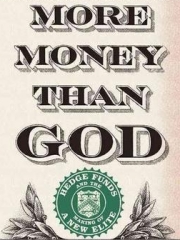More Money Than God by Sebastian Mallaby
I first discovered this book through a tweet with a screenshot of a quote. It was a quote about Renaissance Technologies trading on signals that make no sense – otherwise, other hedge funds would find the same trades. The tweet didn’t have a caption. But like everyone who has ever been a student, I am no stranger to googling exact phrases and praying that something shows up. It worked. The book is More Money Than God.
1) Alfred Winslow Jones – the father of the hedge fund – was a Marxist at one point.
A. W. Jones is credited with combining leverage and hedging. He also started the 20% performance fee in order to avoid income tax and pay capital gains tax instead.
2) Steinhardt, of Steinhardt, Fine, Berkowitz, became successful through block trading.
A recurring theme with hedge funds is that they pray on other players who are forced to make certain trades. Once hedge funds identify one of these situations, they are able to profit from it. For Steinhardt, it was block trading. For example, a pension fund might need to buy a large block of stock. Steinhardt used this to his advantage. Eventually, the scale of his trades also gave him access to insider info, which further helped him.
3) The carry trade involves buying currencies that cost less in the forward market than in the spot market.
My understanding of the carry trade was that you borrow in a currency with low interest rates and lend in a currency with high interest rates and pocket the difference. This book presented a different way of looking at it. A forward rate a lot less than the spot rate implies high interest rates, since the discount in the forward market is essentially compensating for the missing interest. Currencies with high interest rates tend to appreciate. So one can buy currency forwards trading at a big discount and sell currency forwards trading at a smaller discount.
4) In a precursor to the 1992 British pound trade, Soros profited from dollar depreciation as a result of the Plaza Accords.
The USD had been very strong, and Reagan wanted to reduce the trade deficit by depreciating the dollar against the yen and the deutsche mark.
5) The Japanese expected their fund managers to return 8 percent, which contributed to the stock market crash of 1990.
One of the most interesting (although unconfirmed?) anecdotes in the book. Japanese savers expected an 8 percent return on the year. Once the market fell a bit at the beginning of the year, fund managers responded by pulling out of the equity market and piling money onto the bond market. Had the drop occurred at the end of the year, fund managers might not have felt the need to exit the stock market.
6) Soros and Drunkenmiller bet against the British pound knowing that the British had to devalue their currency.
A flashback to the tutorial on British-Europe relations I took in Oxford. The awkward exchange rate mechanism (arguably still a bad idea given the current state of Europe) forced the pound and the mark to move in step. Given its past epic failures with inflation, Germany refused to lower interest rates. Meanwhile, Britain did not want to increase interest rates due to the number of mortgages with floating interest rates. Eventually, someone had to give. Ultimately, the British had to devalue the pound despite aggressive measures to prop up the market. Doesn’t the yuan situation seem like a deja vu?
7) Soros made disastrous investments in Russia, including bidding for 25% of Svyazinvest.
The author portrays Soros as a god, claiming that Soros was trying to help Russia out and failed. He also pointed out that Soros had the chance to benefit from the downfall of the won, following the Thai baht, and decided not to crush the Korean economy.
8) Long Term Capital Management imploded, and the Fed ended up brokering a deal of 16 banks to save the hedge fund with $3.625 billion.
LTCM had focused on convergence strategies and was probably more sophisticated in its risk controls than many hedge funds. However, when panic set in, forcing players to liquidate all of their positions, these convergence relationships broke down and brought LTCM down.
9) Farallon started the trend of university endowments investing in hedge funds.
The author stresses this as a reason that hedge funds are great for society. Hedge funds have delivered solid returns to universities, thus helping fund education and research.
10) In the aftermath of the economic crisis in 2008, the government suspended shorting of stocks and thus hurt hedge funds while saving the banks.
In another attempt to portray hedge funds as the good guys vs the banks, the author notes that many hedge fund strategies depended on shorting stocks to hedge their positions. By halting shorting to save the banks, the government essentially screwed over hedge funds.
This book is great for presenting a history of hedge funds. It hits all the major players and is quite technical when it comes to explaining their strategies. It is also one of the most pro-finance books I’ve read. From beginning to end, the book praises hedge funds and their founders. Despite claiming that it’s the regulators’ fault for not clamping down on insider trading, the author actually finishes with quite a strong argument. Hedge funds can correct market inefficiencies. Hedge funds can absorb other hedge fund implosions (e.g. Citadel). Hedge funds are small enough that they are not too-big-to-fail. Hedge funds usually trade enough of their capital that the misaligned incentives common in banks are minimal. I’m not sure how great hedge funds really are, but the main point I’d take away is that hedge funds, even the famous ones, don’t always win.
